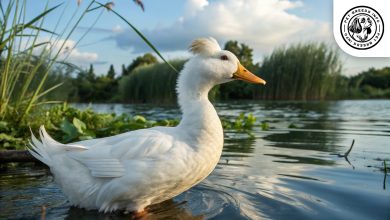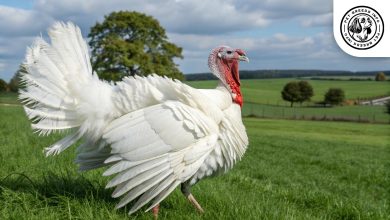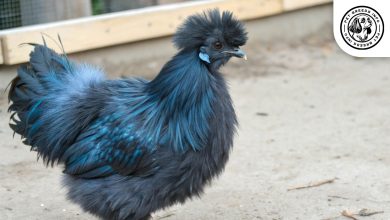Firefinch Bird: Personality, Lifespan, Food & Care
General Introduction of the Breed
The Firefinch is a small, brightly colored bird belonging to the genus Lagonosticta. It is commonly found across sub-Saharan Africa and is known for its vibrant red plumage and active nature. Some species of Firefinch are also referred to as Red Firefinches or African Firefinches.
These birds are native to Africa and thrive in warm, tropical environments. They have been widely admired and kept as cage birds due to their attractive appearance and pleasant social behaviors.
Table of Contents
| Common Name | Firefinch |
| Scientific Name | Lagonosticta spp. |
| Origin | Sub-Saharan Africa |
| Size | 3.5–4.3 in (9–11 cm); 7–12 g |
| Lifespan | 5–8 years |
| Primary Purpose | Aviary bird, ornamental pet |
| Temperament | Peaceful, social, shy |
| Cold-Hardy | No (requires moderate to warm climates) |
Physical Characteristics
Firefinches are small birds, typically measuring between 9 to 11 cm (3.5 to 4.3 inches) in length and weighing around 7 to 12 grams. Males tend to have more vivid red or crimson plumage, while females display duller, more brownish tones.
Their feathers often feature subtle patterns with red shades dominating their head, chest, and tail. Their eyes are dark and round, adding to their expressive appearance. Firefinches have short, slightly curved beaks that are suited for seed consumption. Their tails are small and rounded, while their wings are proportionately short, making them more suited for quick, darting movements.
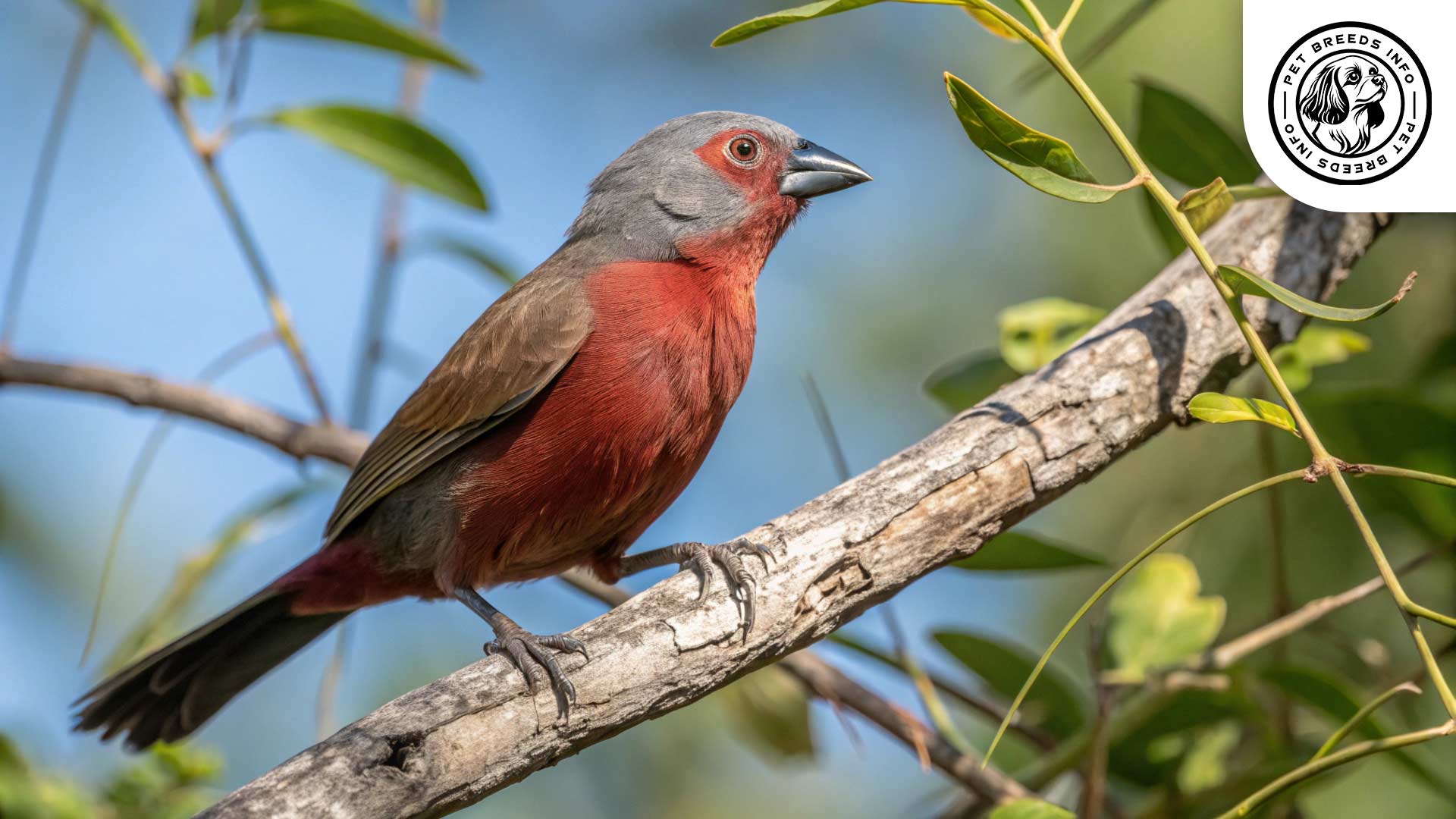
Personality and Temperament
Firefinches are highly social birds that prefer to live in pairs or small flocks. They are peaceful and can get along well with other similar-sized birds, making them excellent additions to an aviary environment.
These birds are moderately active and enjoy flying around their enclosures. While they are not as vocal as some finches, they produce soft, pleasant chirps and calls, which add to their charm.
Due to their gentle nature, Firefinches are enjoyable pets for beginner bird enthusiasts. However, they are sensitive to sudden changes in their environment and do best in a stable, stress-free setting.
Read More: Timneh African Grey
Care and Maintenance Requirements
Firefinches require a spacious cage or aviary with enough room to fly and explore. A well-designed aviary with plenty of perches, hiding spots, and feeding stations is ideal for their well-being.
They do not require excessive grooming, but their environment should be kept clean. Regular cage cleaning, fresh water supply, and bathing opportunities (such as shallow water dishes) should be provided.
Firefinches thrive in moderate to warm temperatures. Cold environments can be harmful to them, so indoor housing with temperature control is recommended in colder climates.
Diet and Nutrition
Firefinches primarily feed on seeds, supplemented with greens, soft fruits, and insects. A high-quality finch seed mix should be the foundation of their diet.
Live or dried insects, such as mealworms and small larvae, are excellent protein sources, especially during breeding seasons. Fresh fruits, finely chopped vegetables, and occasional supplements help keep them healthy.
Avoid giving them foods like chocolate, avocado, and caffeinated drinks, as these are toxic to birds. Fresh, clean water should always be available.
Health and Common Medical Issues
Firefinches are generally hardy birds, but they are susceptible to common avian diseases such as respiratory infections, mite infestations, and gastrointestinal issues.
Providing a clean environment, a balanced diet, and routine vet check-ups can help prevent most health concerns. Signs of illness include lethargy, weight loss, fluffed-up feathers, and difficulty breathing.
They typically have a lifespan of 5 to 8 years in captivity when properly cared for.

Training and Behavior Management
While Firefinches are not trainable in the same way as parrots, they can become accustomed to their owners with gentle handling and positive reinforcement.
They are naturally shy birds, so gaining their trust requires patience and a calm approach. Providing treats and speaking softly can encourage them to feel more comfortable in their surroundings.
Read More: New Hampshire chicken
Interaction with Other Animals and Humans
Firefinches are well-suited for multi-bird households as they enjoy the company of other small, non-aggressive bird species. They are social but do not generally seek out human interaction in the way that parrots do.
They are not aggressive towards humans or children, but due to their delicate nature, they are not ideal pets for young kids who may handle them too roughly.
They make excellent aviary birds and thrive best in group settings rather than as solitary pets.
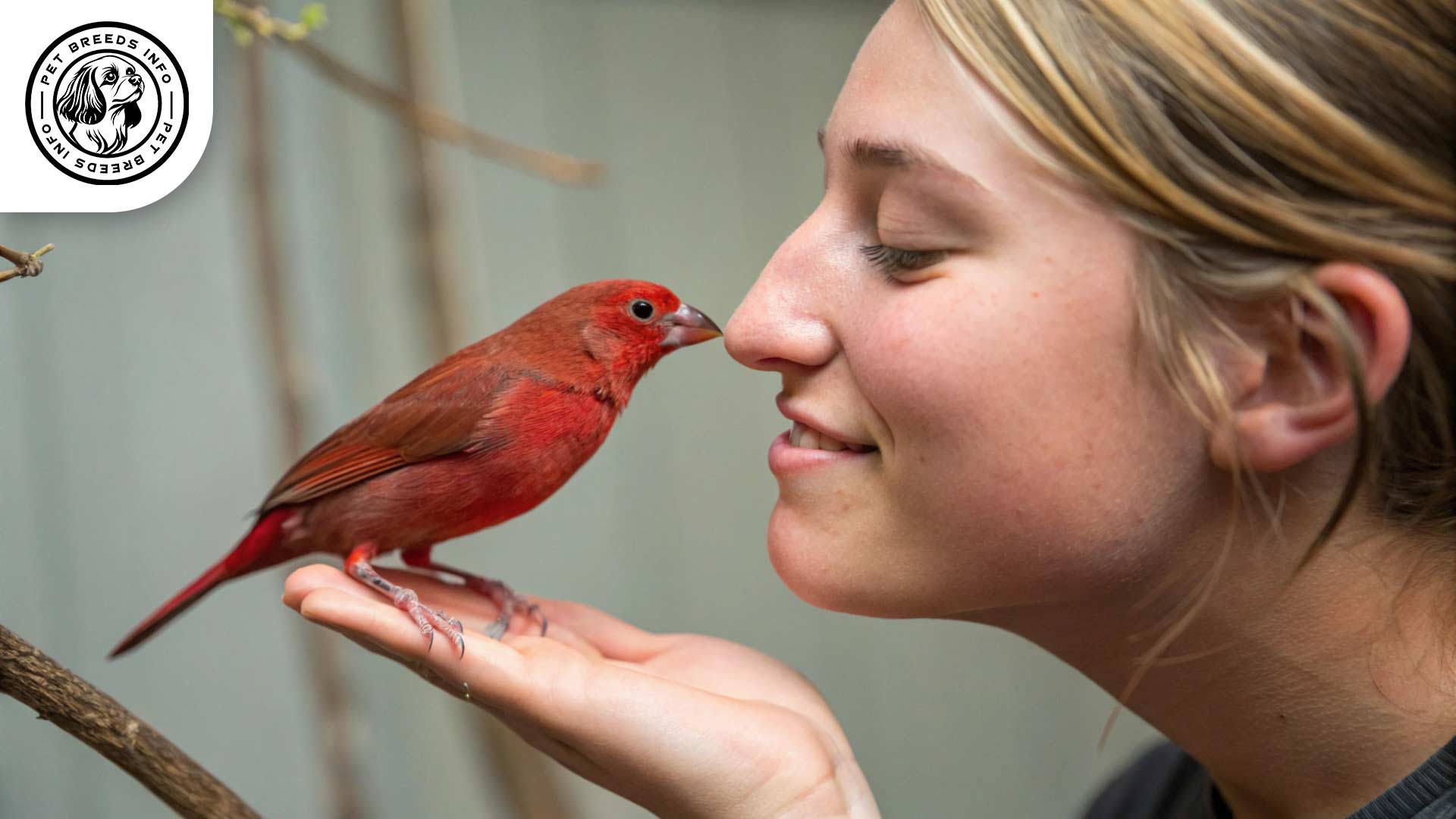
Price and Availability
The cost of a Firefinch varies depending on the species and location but generally ranges between $30 to $100 per bird.
When purchasing, it is recommended to buy from reputable breeders or specialized avian pet stores that ensure ethical breeding practices. Adoption from bird rescues is also a good option.
Conclusion and Final Thoughts
The Firefinch is a visually striking and socially engaging bird, making it a wonderful choice for aviary enthusiasts and bird keepers interested in finch species.
Best suited for those who can provide a stable and well-maintained environment, Firefinches thrive in spaces that allow them to live alongside other birds in a peaceful setting.
Prospective owners should consider their delicate nature, dietary needs, and sensitivity to environmental changes before bringing them home.
With proper care and attention, these birds can provide joy with their beauty and gentle chirping sounds.
Read More: Scarlet Macaw Bird
FAQ
Are Firefinches good for beginners?
Yes, they’re great for beginner bird owners who prefer low-maintenance, peaceful aviary birds.
Do Firefinches talk or mimic sounds?
No, they are not mimics but do make soft, pleasant chirping sounds.
Can Firefinches live with other birds?
Absolutely! They do well with other small, non-aggressive birds in a shared aviary.
Do they need to be kept in pairs?
Yes, Firefinches are social and thrive in pairs or groups rather than being kept alone.
What do Firefinches eat?
They mainly eat seed mixes, but benefit from greens, fruit, and small insects like mealworms.

